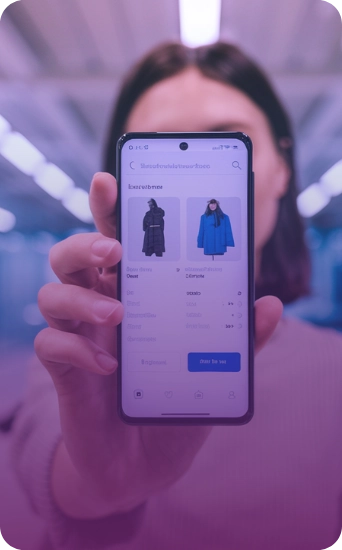The new trend in Brazilian e-commerce is the Cross BorderThis consists of buying or selling products online directly from other countries. Before the pandemic, some consumers were wary of shopping online, as products took a long time to arrive and there was a fear of paying taxes.
However, the professionalization of the logistics and digital marketing markets, as well as the digitalization of consumers over the last two years, have boosted the growth of online sales.
According to Webshoppers 44 by Ebit|NielsenThe volume of sales of products bought by Brazilians in the cross border is estimated at R$ 9.6 billion in the first half of 2021, an increase of 15% in the number of orders compared to the previous semester. In 2020, the total volume of foreign sales here passed R$ 22.7 billion.
The figures show the confidence that consumers now have in buying products abroad. The reduction in delivery time and the quality of the products, as well as lower prices than those sold in Brazil, are the main incentives for shopping online from other countries.
This disparity between the prices of products purchased in Brazil and abroad has had an impact on local sales. Brazil still suffers from the costs of selling products, due to the country's high taxes. Many entrepreneurs have realized that selling abroad can be more advantageous and with higher profit margins.
Countries that benefit most from Cross Border
According to data from "Seizing the Cross-Border Opportunity" conducted by Forrester, 82% of consumers around the world have already bought from websites in other countries. And in this scenario of accelerating international purchases, Latin America is one of the leaders, with 83% of the population reporting that they have already made international purchases. On the other hand, China is in the lead among the countries that sell the most. The markets that buy the most online from other countries are North America, followed by Europe and China.
And if it's hard to compete with the Chinese here in Brazil, it may be easier in the US. After the US government surcharged Chinese products at 25%, Brazilian companies now have better conditions to become competitive. The fact that the real is devalued against the dollar increases price competitiveness and gains strength in the American market. It may be possible to sell a product in the US for almost twice the price.
Experts say that entrepreneurs are unable to internationalize their products. This is often due to a lack of knowledge of regulatory laws, a belief in the complexity of the processes and the fact that high taxes and the rising dollar can make it impossible to internationalize their products.
Here are the 8 main points to take into consideration when starting the Cross Border:
1. Market analysis
Analyzing the target market and understanding whether there is in fact a demand for your products in the country is the first step to take before venturing into international territories.
2. Export costs
When exporting products, it is advisable to check the cost of international freight so that it is not more expensive than the product itself, and to find out what rules apply in the country of destination.
3. Multilingual resources
In addition to language, the spelling of words and phrases must be ensured, taking into account regional and cultural differences between countries. Labels or user manuals should be translated into the local language to facilitate the sale of products.
4. Reverse logistics
If it's already costly today to carry out reverse logistics within Brazil, imagine this operation from other countries. Choosing a product that doesn't generate so much reverse logistics can be fundamental in this business, as you'll invariably come to the conclusion that it's better to lose a product than to import it back in an international operation.
5. Platforms
Choosing the right platform to set up your e-commerce is essential if you want to internationalize your brand. Often, local platforms may not be able to serve the international market in terms of technology, SEO and integrations.
6. Automatic gearbox conversion
Products must be priced in different currencies in order to calculate the price of the input in its country of origin. For this reason, payment must be made on platforms that accept international transactions with the sale of different currencies and the invoice must contain the value with the cost of the currency exchange rate on the day of purchase.
7. Means of payment
Not all payment methods accept international currencies. So be careful when choosing your payment provider so that you don't have any surprises when it comes to selling your products in other currencies.
8. Identify the ideal marketplaces to engage with
Identifying which marketplaces are related to your product and hosting your virtual store can be a strategic move to boost your sales in the global market.
How to start Cross Border
Starting Cross Border requires analysis and strategic planning. As well as identifying the best product categories and the best country for your sales, you need to have a brand internationalization plan.
One of the companies providing this type of service is Social Digital Commerce, which has over 20 years' experience in the sector. In other words, the company acts as an integrator, taking care of the entire Cross Border operation.
O Full Comex guarantees end-to-end coverage, from the creation of the project to the adaptation of the brand and product communication process.
The starting point for sales is directly from the company's warehouse in Miami. In this way, it is possible to reduce the cost of freight by 35%, as well as saving time and speed in product delivery.
Social Digital Commerce has professionals with business experience who can offer a wide range of tax services, as well as providing advice on assessing the risks and benefits involved in this commercialization.
Which categories are worth selling on the international market?
The product categories that are on the rise for cross border sales are: toys, cosmetics, jewelry, watches, art and beauty.
Clothing and footwear are also among the most saleable categories. On the other hand, electronics and computers are not recommended because, as Asia already supplies the major continents, it wouldn't make sense for Brazil to resell these products, as they arrive here at a high import price.
Today we bring you tips and possibilities for internationalizing your brand. This is the ideal time, because with the appreciation of the dollar, Brazil is becoming very competitive for exports.
Follow our networks or get in touch:










